Following on from the previous episode, today we continue on our journey photographing the wildlife of Eastern Hokkaido, starting with the beautiful Whooper Swans, then moving on to the Sea Eagles, with a cameo from an Ezo Deer and a Pod of Orca.
Whooper Swan Interior
Having left the cranes behind, we took a steady drive over to Lake Mashuu for a bit of a touristy landscape stop to help us wind-down a little after the last few busy days with the cranes. We arrived at Lake Kussharo mid-morning, and had an hour photographing in a corner of the lake before lunch, but it was very windy in the afternoon, and the swans were hunkered down, so we didn’t get to really start photographing them until the following morning, and one of my first shots from that morning is this.
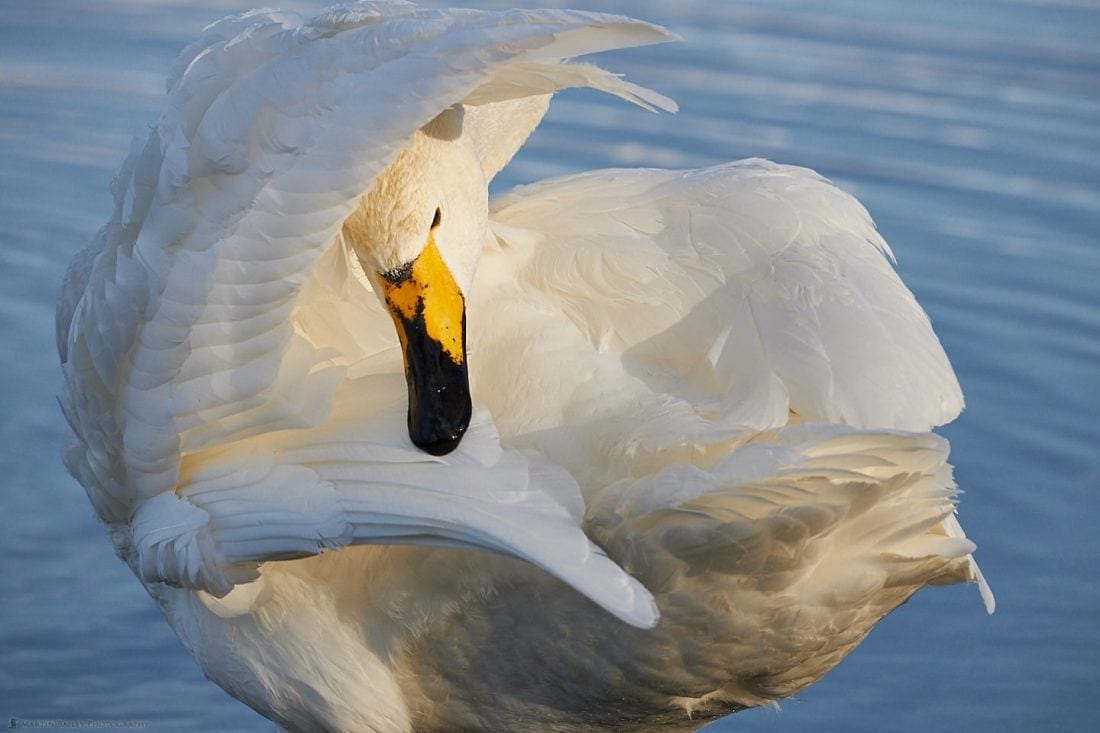
It was shortly before 8 am when I shot this, so the winter sun had really just risen above the trees to our backs as we stood on the shore of Lake Kussharo. I really like how this swan seems to be shining from within with the beautiful warm light from the low sun. I obviously framed this very tightly in camera, to help us to see and appreciate the details in the feathers as the swan preens itself. With it being clear I was able to get a shutter speed of 1/1000 of a second at ISO 800 at f/11.
Morning Song
Thirty minutes later, I shot this next image as the sun got brighter, and the light now less warm, but I had lowered my ISO to 400 with the same shutter speed and aperture, so it was now exactly one stop brighter.
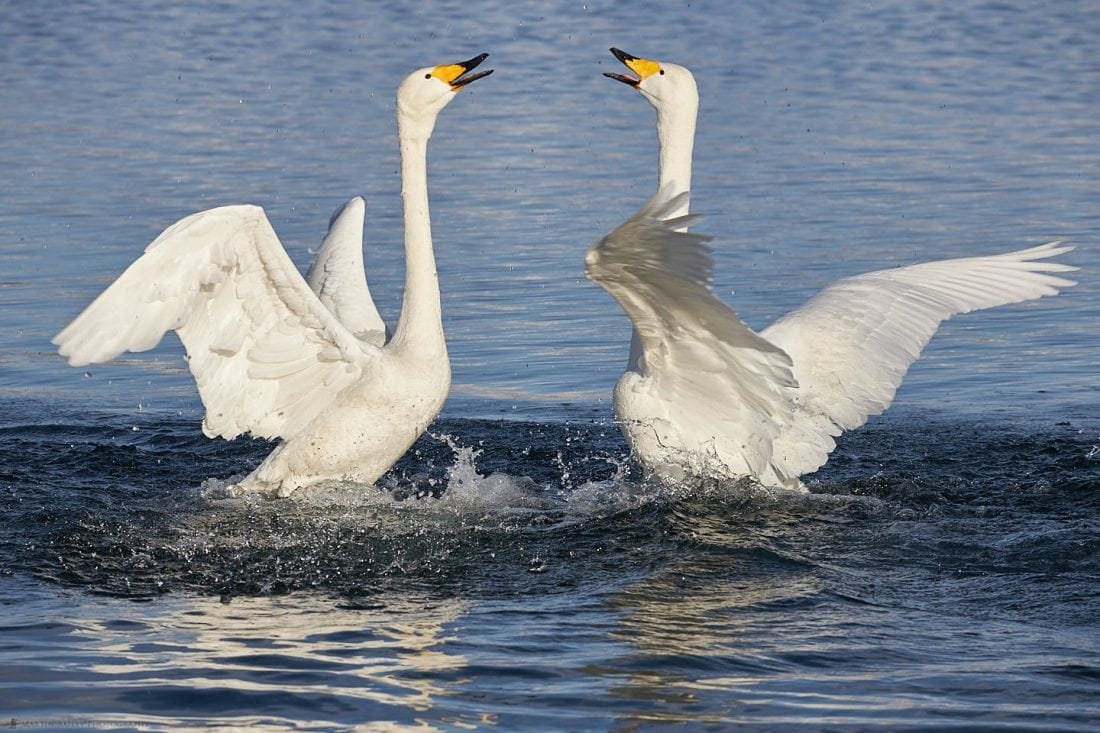
As you can see, this part of the lake was not frozen at this point, and that is quite uncommon for this time of year. It would freeze completely before we revisited in three weeks time, but to not be frozen at the start of February is something that I’ve only seen once before.
This was one of those frantic calling sessions that the birds often do after landing, and it was followed by a somewhat vicious attack on these swans from a third swan that was just to their right as they called like this. I have photos of that too, but this is more beautiful, and although their fighting is only natural, I also kind of don’t want to sensationalize it.
A Dozen Swans in Flight
We spent around 90 minutes at our first location for the day, then moved on, to the place that we’d spent our first hour before lunch on the previous day, and were quickly rewarded with a couple of spectacular fly-ins. This is the second group that arrived in our corner of Lake Kussharo; a full dozen of swans, with the mountains on the opposite shore of the lake running along the bottom of the frame.
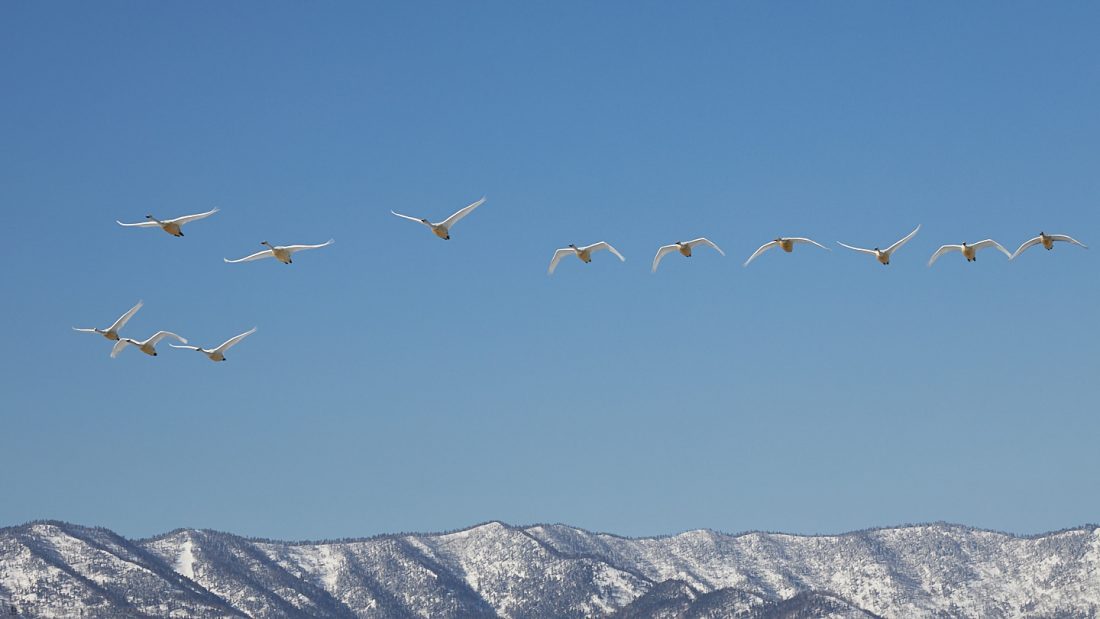
I’ve cropped this down from the top, to make it a 16:9 aspect ratio image, as the blue sky at the top, was not really adding any more than what we have here, and as I often say, if any aspect of an image isn’t adding something, it’s generally detracting from the overall appeal of the photograph. I feel also that this image is better balanced with roughly equal amounts of
Three’s Company
Here’s another photo from the little corner of the lake thirty minutes later, and here we see three swans doing another of their “Hey we just landed, isn’t it great that we can fly!” songs.

I generally don’t do a lot to my wildlife photos, but I did spend a few minutes on this to draw a mask over the birds and lighten the shadows a little, with the Shadows slider in Capture One Pro. I also drew a gradient mask over the dark trees and used the Luma Tone Curve to darken that down a little, as that helps to enhance the swans’ breath by adding some contrast. I always like it when you can see the breath of an animal. I feel that it literally breathes a little more life into the photograph.
Pan-demonium
After lunch on this day we did a 90 minute workshop session at the hotel, where I shared some details of the wildlife that we shoot on this trip, and did a short demonstration of how I processed some of my images so far in Capture One Pro, and then we went back out towards the end of the day, for our panning shoot with the swans.
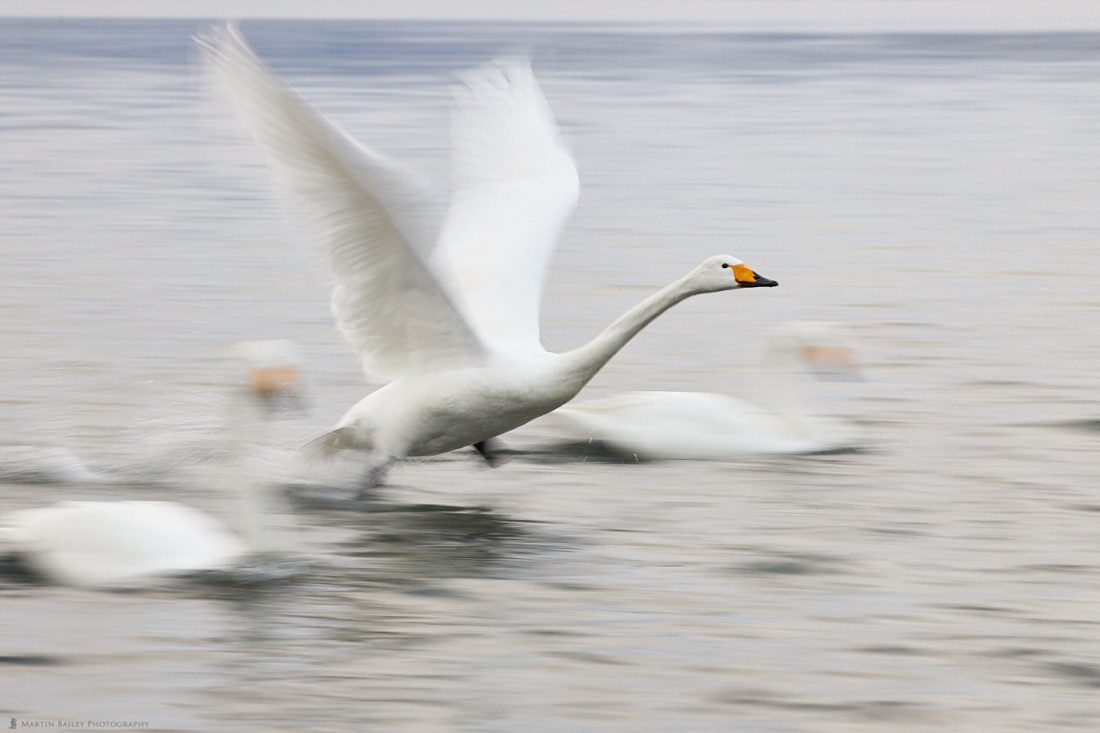
I tried this year to time my panning shots so that I had other birds in the frame, as I have grown a little bit bored with my single bird panning shots. On the first trip, this shot with the context provided by the two other stationary swans is one of my favorites. In a couple of weeks I’ll share some shots from the second wildlife tour for this year, where I have multiple swans flying together, and all with relatively sharp heads.
This technique is really fun. I set my shutter speed at 1/40 of a second and my aperture to f/14, and finally, adjusted my ISO to 2000 for optimal exposure. I was using my Canon EOS R and the EF 100-400mm Mark II lens at 200mm for this particular shot.
The following morning, we visited the swans once more, and I have a shot of some of the swans flying in low that I really like, but we’re already at five images just of the swans, so we’ll move on now. We made our regular stop at the Sulfur Mountain, but this was one of the rare occasions when the mist and light weren’t quite working for me, so we’ll skip that too.
Five Years!
On our way over to the Notsuke Peninsula, before our final destination for the day at Rausu, where we’d spend three nights to photograph the sea eagles, we stopped at a place where I know there to be a Ural Owls nest. This is the nest where the owl had been tormented by people with no respect for the wildlife and had not been seen for five years now.
We stopped by each year in the hope that an owl might return, and finally, this year we found an owl on the nest. It was in the next tree, in an open concaved area, but it was lovely to see this bird. I’m just hoping that as the word gets out that he’s back, people are a little more respectful and don’t scare him away again.
As with the owl shot from the previous episode, I was using my 200-400mm lens for this, with the internal 1.4X Extender engaged and a 2X Extender fitted, giving me a focal length of 1120mm. This is working really well with the EOS R, due to the lower resolution. This combination is slightly soft with the 5Ds R, so it’s a nice little bonus to be able to shoot at this focal length when necessary.
Ezo Deer
When we got over to the Notsuke Peninsula it was nice to see that there was plenty of snow, and we quickly encountered some of the Ezo Deer that roam around the peninsula feeding on the grasses that make their way through the snow.

I really enjoy photographing these large deer. The surroundings are what make this photo for me, showing this hardy creature in his harsh surroundings. The bushes and foliage here are on a very thin strip of land that is the peninsula, and in the background, the expanse of white is the frozen brackish lake, between the mainland the peninsula.
Eagles at Dawn
We’re going to go over ten images by a few to complete this series in two parts, so bear with me, as we start our first sea eagle shoot on the following morning. This was actually from the end of our first shoot, when we went over to the quay wall, where the snow reflects light back up onto the underside of the birds, enabling us to shoot them in almost studio conditions.

This is pretty much straight out of the camera, with just a little Clarity and Highlights sliders applied in Capture One Pro. I love it when we can see these magnificent animal’s talons hanging down like this. It makes me wonder what it must be like to live with feet that have those great big long claws on them. The birds do sometimes use their wings, but essentially those clawed talons are the eagle’s main interface with the world, and that must be both tough, and really cool at the same time.
The light was relatively low for this whole shoot, so to get my shutter speed to 1/1000 of a second at f/8 I had to increase my ISO to 3200 for this shot. That’s not a problem for the EOS R though. I have some shots from the next trip where I was getting great results even at 12800, so there’s nothing to worry about here, as long as I’m exposing to the right.
Menacing White-Tailed Eagle
The other sea eagle that we photograph on this trip is the White-Tailed Eagle, which is more common than the endangered Steller’s Sea Eagle, and slightly smaller, but a beautiful eagle non-the-less. In this image you can see how menacing these eagles can look as they float in the air, waiting for their chance to pounce on something, like the fish that we throw out for them.

This shot, to me, has a kind of Edward Scissor-Hands feel to it, with the eagle’s talons almost mirroring the spiky looking splayed out flight feathers. There’s a bit of movement in the talons, as my shutter speed was a slightly slow 1/1000 of a second, but I’m not too worried about that. It adds a little bit of dynamism to the shot in my opinion.
We went back down the Notsuke Peninsula again on the second afternoon in Rausu, and although saw a number of Northern Red Foxes, the photos that I got on this trip weren’t anything to write home about, so we’ll skip them.
A Pod of Orca
Shortly after we started shooting on the final morning out with the Sea Eagles, the skipper of the boat that we use asked if we’d like to go and shoot a pod of Orca that had been spotted around 15 minutes down the coast. I, of course, said yes, so off we went to find a total of seven or perhaps eight Orca. Here you can see three of them as they surfaced.
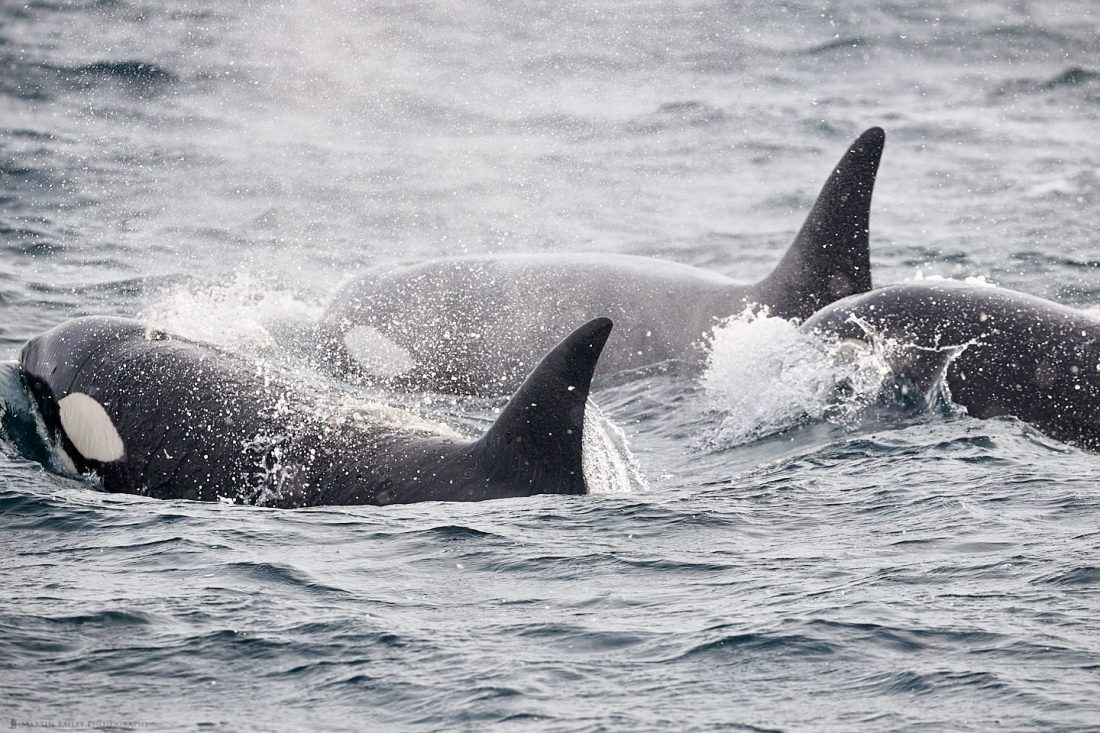
This is my framing straight out of the camera, so I was pretty tight at 271mm. These are magnificent animals too. It’s such a privilege to be able to photograph so many beautiful and powerful animals on this trip. This is only the second time we’ve been able to photograph the Orca on this trip though, and that makes it even more special.
Steller’s Sea Eagle in Action
After photographing the Orca, we sped back down the coast to just outside the port at Rausu and continued to photograph the Sea Eagles. In this next image, you can see a Steller’s Sea Eagle doing what he does, snatching a fish out of the water.

I can’t tell you how happy I am that the EOS R, Canon’s first full-frame mirrorless camera, can be focussed in a split second for images like this. I really don’t like cropping my images unless I have to, so the majority of the time, as with this photo, the framing that you see is the framing that I shot the image with. This is especially important now that I’m back down to 30 megapixels, as opposed to 50 with my 5Ds R bodies. Still, though, the detail in these images is exceptional, and as I’ve mentioned before, I’m now really hoping that the rumors pan out, and the next 5Ds will be an RF Mount mirrorless camera.
Oshin Koshin Falls
We finished our trip with a drive around to the Utoro side of the Shiretoko Peninsula, doing some Intentional Camera Movement shots with the birch trees on the way, and shot the river estuary that I’ve shared images of before. We also visited the Oshin Koshin Falls, as usual, and I’ll share one last image that is a little different to what I usually end up with.

The way the frozen part of the falls framed the top portion was kind of cool on this visit, and I was able to get an almost complete border of ice along the top edge, without starting to see the top of the hill or sky above the falls, and I’ve not seen this very often, so decided to capitalize on the opportunity. I love the textures in this snow-covered ice, and believe it or not, this is not a black and white conversion, it’s a color photo. I used probably my
On our final morning, we went for a walk in the Shiretoko National Park, before starting our drive to the airport to head back to Tokyo where we would all head home or set off on an onward journey. As usual, after our final shoot, I recorded comments from each member of the group, which I’ll play you now.
[Please listen with the audio player at the top of the post to hear the lovely comments from this group.]
OK, so we’ll wrap it up there in two parts, which was slightly rushed, but I have already finished the tour after this one, and want to move on to some other topics, so hopefully this is OK.
Japan Winter Wildlife Tours 2020
Note that we do still have some places open on the 2020 Japan Winter Wildlife Tours, so if you might be interested, please check that out here.

Show Notes
Visit the 2020 tour page here if you might be interested in joining this tour and workshop: https://mbp.ac/ww2020
If you are thinking of picking up a Canon EOS R, support us, at no extra cost to yourself, by using our affiliate links embedded in this post.
Audio
Subscribe in iTunes to get Podcasts delivered automatically to your computer.
Download this Podcast as an MP3 with Chapters.
Visit this page for help on how to view the images in MP3 files.

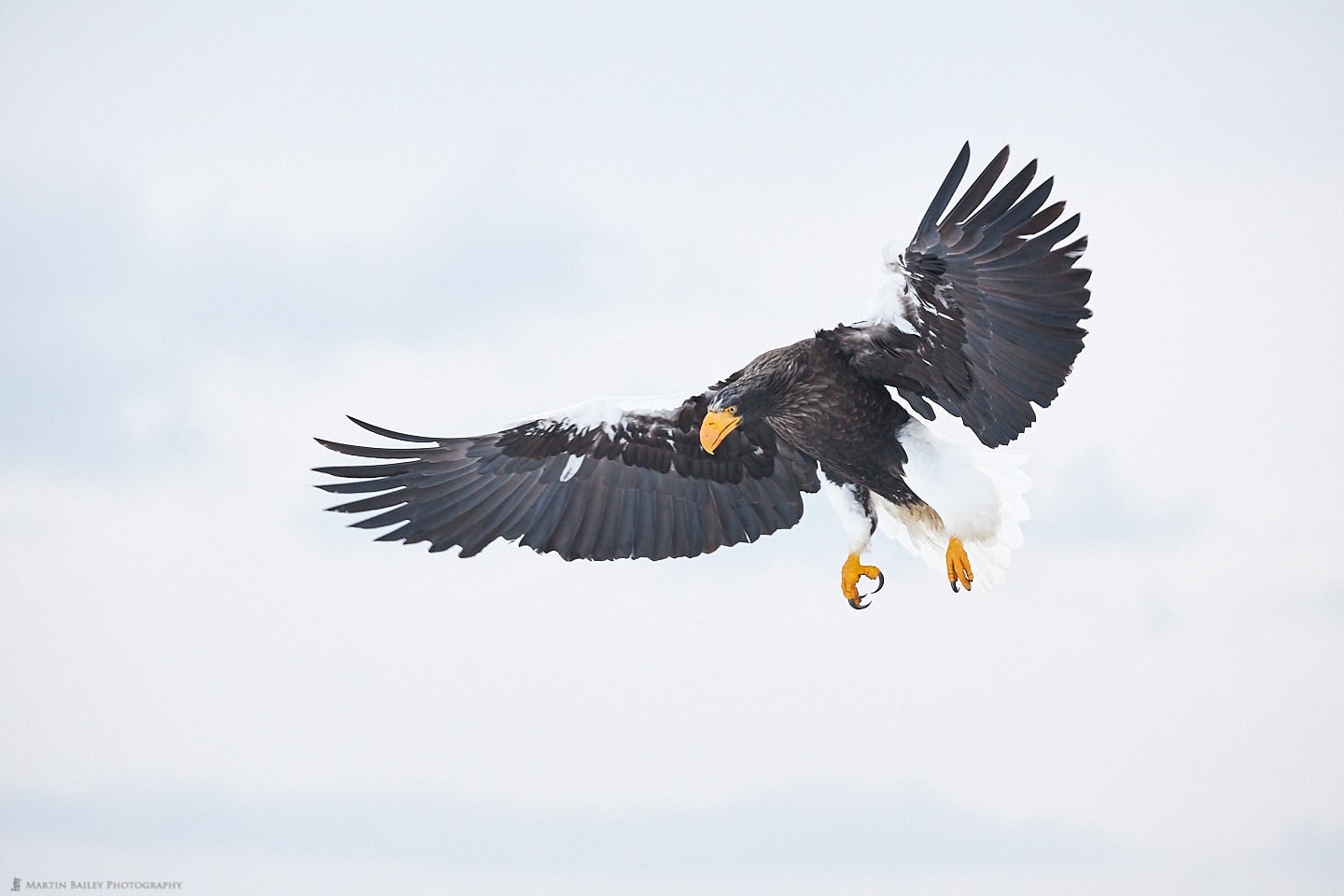


0 Comments